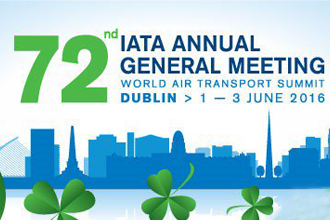
The International Air Transport Association (IATA) revised its 2016 financial outlook for global air transport industry profits upwards to $39.4 billion (from $36.3 billion forecast in December 2015). That is expected to be generated on revenues of $709 billion for an aggregate net profit margin of 5.6%. 2016 is expected to be the fifth consecutive year of improving aggregate industry profits.
The airline industry continues to add value to its customers, to the wider economy, and to governments:
- Consumer benefits from the industry’s improved performance are significant. In 2016 the average return airfare (before surcharges and taxes) is expected to be $366, which is a 62% reduction on 1995 levels (after adjusting for inflation). Passenger numbers are expected to reach 3.8 billion. The network of unique city pairs will reach 18,243.
- The number of direct airline jobs is expected to rise by 2.8% in 2016 to 2.61 million. The total airline payroll in 2015 is expected to reach $153 billion (up 6.4% from $144 billion in 2015). Compared with 2015, average unit labour costs are expected to rise by 0.1% as productivity per employee improves 3.4%. Airline employees are also extremely productive for the economies in which they work, generating gross value added (GVA, the company level equivalent to GDP) of $100,186 per employee in 2016 (up 5.3% on 2015).
- The industry tax bill is expected to grow to $118 billion in 2016, a 5.5% increase on 2015.
- Airlines’ environmental performance continues to improve. The industry is on target to meet its goal of improving fuel efficiency by an average of 1.5% annually until 2020. Current analysis shows that on average the sector has improved fuel efficiency by 2.4% per year since 2009, a figure that is expected to normalise in the coming years.
- Investments in new aircraft are a major driver of fuel efficiency improvements. In 2016, airlines are expected to take delivery of almost 1,900 new aircraft. About half are projected to replace less fuel-efficient older aircraft.
- The industry remains committed to achieving carbon-neutral growth from 2020. This is in addition to a 1.5% average annual improvement in fuel-efficiency to 2020 and complements the long-term goal of cutting net emissions in half by 2050 (compared with 2005 levels).
IATA represents some 260 airlines comprising 83% of global air traffic.




